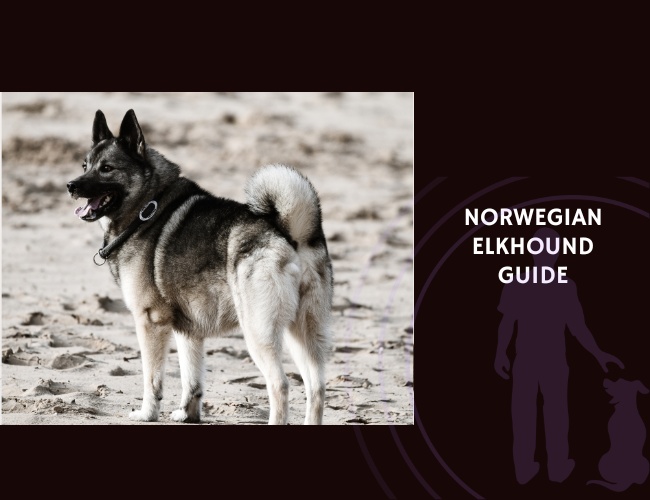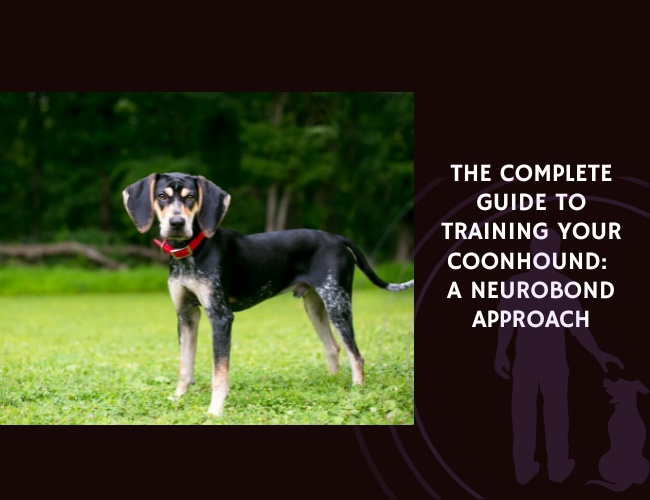Introduction: Meeting Your Viking Heritage Dog
Picture a dog that once stood beside Viking warriors, tracking moose through Norwegian forests with unwavering determination. The Norwegian Elkhound carries this ancient legacy into your modern home, bringing with them a spirit as bold as their silver-gray coat is beautiful. Let us guide you through understanding this remarkable breed—a dog that combines primitive independence with deep family loyalty.
Did you know that these dogs have remained virtually unchanged for over 6,000 years? Archaeological evidence shows Elkhound-like dogs buried alongside Viking warriors, testament to their valued place in Nordic society. Today, your Norwegian Elkhound might not be hunting elk, but they’ll bring that same fearless devotion to protecting your family and home. 🐾
Character & Behavior
Understanding Your Independent Thinker
The Norwegian Elkhound’s personality reflects thousands of years of selective breeding for independence and intelligence. You might notice your Elkhound isn’t the eager-to-please type like a Golden Retriever—and that’s exactly how they were meant to be. These dogs needed to think for themselves while tracking dangerous game through harsh Nordic terrain.
The Independent Mind Your Elkhound possesses what researchers call “primitive drive assessment”—they’re hardwired to make decisions independently. This means training requires patience and understanding. While they’re capable of learning complex commands, they’ll often pause to consider whether following your instruction makes sense in that moment. This isn’t stubbornness; it’s the same critical thinking that kept their ancestors alive during hunts.
This independence manifests in fascinating ways throughout daily life. You might call your Elkhound to come inside, and watch them literally stop, look at you, glance back at whatever captivated their interest, then make a calculated decision about compliance. Experienced owners learn to read these moments—sometimes your dog is genuinely processing conflicting instincts, weighing your request against environmental stimuli that trigger ancient programming.
The key to working with this independence lies in making cooperation rewarding rather than demanding blind obedience. Successful Elkhound owners report breakthrough moments when they shifted from “commanding” to “convincing.” Instead of repeating commands louder, they learned to make themselves more interesting than whatever distracted their dog. This might mean producing a favorite toy, using an excited voice, or simply walking away to trigger their dog’s desire to follow.
Loyalty Beyond Measure Despite their independence, Norwegian Elkhounds form incredibly strong bonds with their families. You’ll find your furry friend wants to be wherever you are, following you from room to room with quiet dedication. They may be reserved with strangers—taking time to assess new people—but family members receive enthusiastic greetings that could knock you over with pure joy. This selective affiliation pattern shows their discriminating nature; not everyone earns an Elkhound’s trust, but once you do, it’s for life.
This loyalty extends beyond mere companionship into protective vigilance. Your Elkhound maintains constant awareness of family members’ locations and activities. Many owners describe their dogs as having “counting” behavior—mentally tracking everyone in the household and showing distress if someone’s missing. During walks, they’ll frequently check that slower family members keep up, exhibiting the same herding awareness their ancestors used with hunting parties.
The depth of their attachment sometimes surprises new owners. Unlike breeds that bond equally with everyone, Elkhounds typically choose a primary person while maintaining affection for other family members. This special person receives the most enthusiastic greetings, the closest following, and often becomes the only one who can effectively call the dog off an interesting scent trail. Understanding and respecting this selective bonding helps families navigate dynamics without jealousy or frustration.
The Social Dynamics In multi-pet households, your Elkhound will establish clear social hierarchies. They work best as either the only dog or with a clearly defined pack structure. Early socialization during their critical windows (8-16 weeks) dramatically impacts their ability to navigate social situations throughout life. Without proper exposure, their natural wariness can develop into problematic behaviors.
Their approach to other dogs reflects their hunting heritage—Elkhounds historically worked alone or in small, coordinated groups with defined roles. Your modern Elkhound carries this programming, often showing discomfort with chaotic dog park dynamics where rules seem unclear. They prefer structured interactions with known dogs over random social encounters. This doesn’t mean they’re antisocial; rather, they’re selective about their canine friendships, forming deep bonds with compatible companions while remaining aloof with others.
Cat relationships depend entirely on early exposure and individual personality. Some Elkhounds coexist peacefully with felines, especially when raised together. Others never overcome their prey drive, viewing cats as exciting moving targets. The critical factor? Those first 16 weeks of life. Puppies exposed to cats during this period typically develop appropriate inhibition, while adult Elkhounds meeting cats for the first time may never achieve safe coexistence.
Reading Your Elkhound
The Subtle Art of Nordic Communication
Understanding Emotional Intelligence What many interpret as aloofness actually represents sophisticated emotional intelligence. Norwegian Elkhounds excel at reading human emotions, often responding to subtle mood changes before you’re consciously aware of them. Feeling sad? Your typically independent Elkhound might suddenly become velcro-dog, pressing against your legs or resting their head on your lap. They offer comfort without overwhelming neediness—a perfect balance for those who appreciate support without constant demands for attention.
This emotional attunement extends to household dynamics. Elkhounds often position themselves strategically to monitor family interactions, intervening if play becomes too rough or voices rise in argument. Many families report their Elkhound acts as a natural mediator, physically placing themselves between arguing members or redirecting tension through attention-seeking behaviors. This isn’t trained behavior—it’s instinctive pack management.
Behavioral Quirks and Endearing Habits Living with an Elkhound means discovering delightful personality quirks. Many develop signature “talking” patterns—not just barking, but elaborate vocalizations that sound remarkably like attempts at human speech. They’ll “argue” when disagreeing with your decisions, producing grumbles, sighs, and what can only be described as backtalk. Far from annoying, most owners find these conversations endearing evidence of their dog’s complex personality.
Resource guarding rarely presents issues with well-socialized Elkhounds, but they do display interesting possession behaviors. Many create “collections”—gathering toys, shoes, or random household objects into careful arrangements. They’re not aggressive about these treasures but clearly take pride in their curation. Some theorize this relates to cache behavior from their ancestral environment, where storing resources ensured survival through harsh winters.
Stress Responses and Resilience Norwegian Elkhounds demonstrate remarkable behavioral resilience when properly socialized. Their stress responses tend toward withdrawal rather than aggression—a valuable trait in our unpredictable modern world. When overwhelmed, they’ll typically seek distance rather than confrontation, making them relatively safe even when stressed. However, this withdrawal can escalate to fear-based behaviors if not addressed promptly.
Understanding your Elkhound’s stress signals helps prevent problems. Watch for excessive panting without physical exertion, pinned-back ears, or unusual stillness. These dogs rarely show dramatic stress responses, instead becoming progressively more shut down. Early intervention—removing them from stressful situations and providing calm reassurance—prevents long-term behavioral impacts. Their natural resilience means they recover quickly from negative experiences when handled appropriately.
The combination of independence, loyalty, and sophisticated social awareness makes the Norwegian Elkhound a complex companion requiring thoughtful understanding. They’re not dogs for those seeking simple obedience or constant affection. Instead, they offer partnership—a relationship built on mutual respect and understanding that deepens over years of shared experience. 🧡
Vocalization & Communication
Understanding How Your Elkhound “Talks”
If you’re considering a Norwegian Elkhound, prepare for a chatty companion! These dogs were bred to bark—it’s literally in their DNA. Understanding their vocal patterns helps you manage this trait effectively while respecting their communicative nature.
The Bark That Saved Lives Historically, an Elkhound’s bark served a crucial purpose: holding dangerous game at bay while alerting hunters to their location. Your modern Elkhound retains this instinct, using different bark types for various situations. Research has identified distinct acoustic patterns including territorial barks (deep, rhythmic), alert barks (sharp, rapid-fire), and excitement barks (higher pitched, variable rhythm).
Managing the Voice Teaching “speak” and “quiet” commands proves essential for Elkhound owners. Because barking is self-reinforcing for this breed, you’ll need consistent positive reinforcement to shape appropriate vocalization. Many successful owners report breakthrough moments when they started rewarding silence rather than just correcting barking. Your Elkhound wants to communicate—your job is teaching them when and how.
Beyond Barking Norwegian Elkhounds communicate through more than just vocalizations. You might notice your dog’s expressive face—those soulful brown eyes aren’t just for begging! They use subtle ear positions, tail movements, and body postures to convey emotions. A relaxed tail wag tells a different story than the rigid, high tail position they adopt when sensing something unusual.

Training & Education
Working With Your Elkhound’s Nature
Training a Norwegian Elkhound requires understanding their unique psychology. These aren’t dogs that live to please you—they’re partners who need convincing that your ideas align with their interests. This collaboration, once established, creates an incredibly rewarding relationship.
The Food Motivation Advantage Here’s where Elkhounds surprise many trainers: despite their independent streak, they’re exceptionally food motivated. This trait, likely evolved from surviving harsh winters, becomes your secret weapon in training. High-value treats can overcome even their strongest hunting instincts—sometimes! Use this motivation strategically, varying rewards to maintain interest.
Recall: The Ultimate Challenge Let’s address the elephant in the room: off-leash reliability. Your Elkhound’s prey drive can override even the best-trained recall when a squirrel darts across their path. Research shows that while consistent training improves response rates, owners should never assume 100% reliability. Instead, focus on building a recall that works in controlled environments and always have backup safety measures like long lines or fenced areas.
Positive Reinforcement Success Stories Modern training science aligns perfectly with the Elkhound temperament. Harsh corrections often backfire, triggering their stubborn streak. Instead, positive reinforcement taps into their problem-solving nature. Set up training scenarios where your dog “discovers” the right answer, then reward generously. This approach respects their intelligence while building willing cooperation.
Critical Training Windows Early puppyhood (8-16 weeks) represents your golden opportunity for shaping behavior. During this period, expose your Elkhound to various environments, sounds, people, and animals. Research indicates that puppies with diverse early experiences show better adaptation to urban environments and novel situations throughout life. Miss this window, and you’ll work much harder to achieve similar results. 🐾
Performance & Activities
Channeling Ancient Instincts
Your Norwegian Elkhound needs both physical exercise and mental stimulation to thrive. Understanding their working heritage helps you design activities that satisfy deep-seated needs while fitting modern lifestyles.
Exercise Requirements: More Than Just Walking Research consistently shows Elkhounds need 60-90 minutes of exercise daily, but quality matters more than quantity. A leisurely neighborhood stroll won’t cut it—these dogs need activities that engage their bodies and minds simultaneously. Think of exercise as having three components: cardiovascular conditioning, mental stimulation, and instinct satisfaction.
Scent Work: The Perfect Outlet Nothing satisfies an Elkhound quite like using their remarkable nose. Scent work activities tap directly into their hunting heritage without requiring actual prey. Start simple: hide treats around your home, then gradually increase difficulty. Advanced practitioners report their Elkhounds can track scent trails over 24 hours old. This natural ability, properly channeled, provides incredible mental fatigue—often more tiring than physical exercise alone.
Urban Adaptations City-dwelling Elkhounds face unique challenges. Without access to large open spaces, creative owners develop urban-friendly activities. Parkour-style obstacle courses, structured pack walks with other dogs, and even treadmill training can help meet exercise needs. The key lies in variety—rotating activities prevents boredom while ensuring comprehensive fitness.
Competitive Opportunities Many Elkhound owners discover competitive dog sports provide perfect outlets for their dog’s drives. Tracking trials showcase natural abilities, while agility challenges their problem-solving skills. Some excel at barn hunt, where they search for hidden rats (safely contained in tubes). These structured activities provide goals for training while strengthening your bond through teamwork.
Ancient. Loyal. Independent.
Your Elkhound is a partner, not a follower.
They carry centuries of independent decision-making in their DNA. This breed doesn’t obey blindly—they evaluate, calculate, and respond based on logic forged in the harsh Nordic wild. Train with respect, not demand.
Devotion runs deeper than display.
They won’t smother you with neediness, but their loyalty is unshakable. These dogs watch, follow, and protect in quiet, deliberate ways. Once bonded, they are yours in every sense—discreet, enduring, and always near.
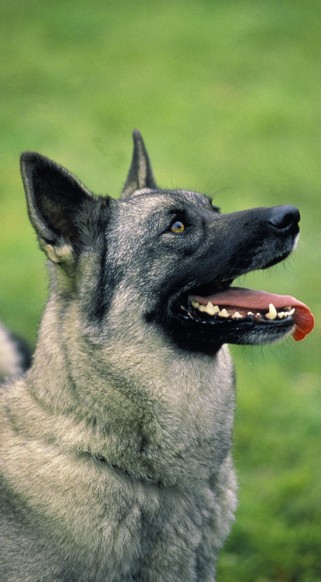
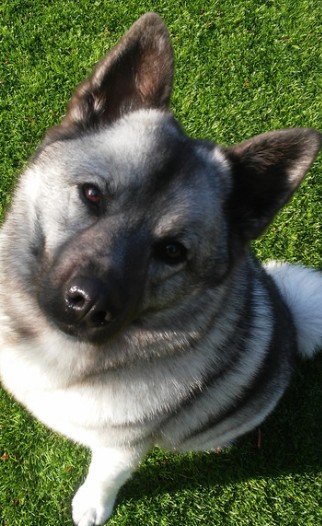
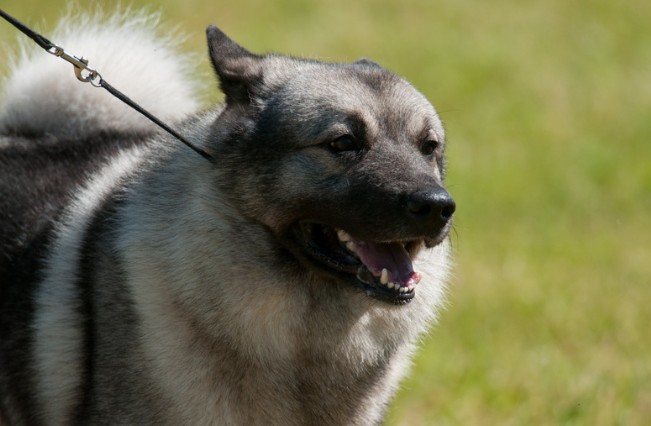
Instinct speaks louder than commands.
From vocal alerts to strategic positioning in family dynamics, your Elkhound doesn’t guess—they read. They sense shifts before you do, reacting with eerie precision. What looks like quirk is often ancient intelligence whispering through the modern world.
Nutritional Recommendations
Feeding Your Food-Motivated Friend
The Norwegian Elkhound’s relationship with food presents both opportunities and challenges. Their exceptional food motivation aids training but requires careful management to prevent obesity—a common breed concern that impacts longevity and quality of life.
Caloric Needs & Portion Control Adult Elkhounds typically require 2-2.5 cups of high-quality dry food daily, divided into two meals. However, individual needs vary based on activity level, age, and metabolism. Monitor body condition score rather than relying solely on cup measurements. You should easily feel ribs with gentle pressure but not see them prominently. That distinctive Elkhound silhouette should show a visible waist when viewed from above.
The Obesity Challenge Those soulful brown eyes prove remarkably effective at extracting extra treats! Research indicates Elkhounds have lower metabolic rates than many similarly-sized breeds, likely an adaptation to scarce food availability in their homeland. This efficiency becomes problematic with modern abundance. Successful weight management requires family-wide commitment—everyone must resist those pleading looks.
Behavioral Nutrition Strategies Transform mealtime into enrichment opportunities. Puzzle feeders slow consumption while providing mental stimulation. Scatter feeding in grass (weather permitting) engages natural foraging instincts. Some owners report success with “working for food” protocols where dogs perform tricks or tasks for portions of their meals. This approach satisfies their need for mental engagement while controlling caloric intake.
Supplementation Science Given breed-specific health concerns, targeted supplementation may benefit your Elkhound. Omega-3 fatty acids support coat health and may reduce inflammation. Glucosamine and chondroitin could help maintain joint health, particularly important given hip dysplasia risks. However, always consult your veterinarian before starting supplements—more isn’t always better, and some can interact with medications or cause imbalances.
Health Concerns
Protecting Your Elkhound’s Wellbeing
Understanding breed-specific health risks empowers you to provide preventive care and early intervention. Norwegian Elkhounds generally enjoy robust health, but several conditions require vigilance.
Fanconi Syndrome: The Silent Threat Perhaps the most serious health concern facing Norwegian Elkhounds is Fanconi syndrome, a kidney disorder that prevents proper nutrient reabsorption. Affected dogs literally urinate away vital nutrients, leading to excessive thirst, frequent urination, weight loss, and eventual kidney failure if untreated. Early detection through regular urinalysis can be lifesaving—catching this condition before clinical signs appear allows for management that extends both quality and quantity of life.
Hip Dysplasia: Managing Genetic Risk Like many medium to large breeds, Norwegian Elkhounds face hip dysplasia risk. This malformation of the hip joint leads to painful arthritis and mobility issues. Responsible breeders screen parent dogs, but genetics aren’t destiny. Maintaining appropriate weight, providing joint-supporting nutrition, and avoiding excessive jumping during puppyhood all influence outcomes. Early signs include bunny-hopping gait, difficulty rising, or reluctance to climb stairs.
Progressive Retinal Atrophy (PRA): Preparing for Vision Loss This genetic condition causes gradual vision loss, typically beginning with night blindness. While not painful, PRA eventually leads to complete blindness. Genetic testing can identify carriers and affected dogs. If your Elkhound develops PRA, take heart—dogs adapt remarkably well to vision loss, especially in familiar environments. Keeping furniture placement consistent and using verbal cues helps affected dogs navigate confidently.
Proactive Health Management Regular veterinary checkups should include breed-specific screening. Annual blood work can detect kidney issues early. Hip evaluations starting at age two identify dysplasia before arthritis develops. Eye examinations by veterinary ophthalmologists catch PRA and other conditions. This proactive approach, while requiring investment, often prevents costlier interventions later while maximizing your dog’s healthy years. 🧡

Lifestyle & Environment
Creating the Perfect Elkhound Home
Your Norwegian Elkhound’s environmental needs reflect their Arctic heritage and working background. Creating an appropriate living situation ensures their physical comfort and emotional wellbeing.
Climate Considerations That magnificent double coat evolved for Norwegian winters, making Elkhounds happiest in cooler climates. They tolerate cold that would send other breeds shivering indoors. However, heat presents real challenges. During summer months, provide ample shade, fresh water, and limit exercise to cooler morning and evening hours. Some owners in warmer climates successfully manage with air conditioning and cooling mats, but this requires commitment and vigilance.
Space Requirements: Quality Over Quantity While Elkhounds can adapt to apartment living, success depends on meeting exercise and stimulation needs. A small space with dedicated owners who provide adequate activity often works better than a large yard with minimal interaction. However, their vocal nature presents challenges in close quarters—neighbors might not appreciate your dog’s commentary on passing squirrels or delivery trucks!
The Barking Reality Let’s be honest: if you need a quiet dog, the Norwegian Elkhound isn’t for you. Barking management rather than elimination should be your goal. Apartment dwellers find success with white noise machines, strategic furniture placement to limit window access, and consistent training. Some report that providing a designated “watching post” where controlled alerting is allowed helps reduce random vocalization throughout the home.
Yard Security & Enrichment If you have a yard, ensure it’s Elkhound-proof. These dogs possess surprising jumping ability and determination when pursuing interesting scents. Six-foot fencing is recommended, with attention to potential dig spots. Create designated digging areas filled with sand where they can indulge this instinct appropriately. Rotate toys and hiding spots to maintain environmental interest—a bored Elkhound becomes destructive or excessively vocal.
Senior Care
Adapting to Your Aging Viking
As your Norwegian Elkhound enters their golden years (typically around age 8-10), their needs change while their devoted spirit remains constant. Understanding senior-specific care ensures these years remain comfortable and enriching.
Physical Adaptations Arthritis commonly affects aging Elkhounds, particularly those with hip dysplasia. You might notice morning stiffness, reluctance to jump, or shortened stride length. Orthopedic bedding provides joint support during rest. Ramps replace stairs for car access. Some owners find heated beds particularly beneficial during colder months—ironic for an Arctic breed, but aging joints appreciate warmth.
Cognitive Considerations Mental stimulation remains crucial for senior Elkhounds. While physical capabilities decline, their intelligent minds need engagement. Adapt favorite activities: scent work requires less physical exertion than agility. Food puzzles can be simplified while still providing enrichment. Many seniors enjoy “helper” roles—accompanying you on errands or “supervising” household activities maintains their sense of purpose.
Nutritional Adjustments Senior Elkhounds often require fewer calories due to decreased activity, but their food motivation remains strong! Transition to senior formulas with adjusted protein levels and added joint support. Some benefit from more frequent, smaller meals to aid digestion. Monitor weight carefully—excess pounds stress aging joints while unintended weight loss might indicate underlying health issues.
Quality of Life Monitoring Develop objective measures for assessing your senior’s wellbeing. Track appetite, mobility, engagement with family, and enthusiasm for favorite activities. Many owners create “good day/bad day” calendars, helping identify patterns and make difficult decisions when necessary. Remember: your Elkhound’s quality of life matters more than quantity. Their independent spirit means they’ll rarely complain, relying on you to advocate for their comfort. 🐾
Making the Decision: Is the Norwegian Elkhound Right for You?
After exploring every aspect of Elkhound ownership, let’s address the fundamental question: does this remarkable breed fit your lifestyle? Honest self-assessment prevents heartbreak for both human and dog.
Ideal Elkhound Owners:
- Have experience with independent breeds or willingness to learn different training approaches
- Enjoy active lifestyles with 60-90 minutes daily for exercise
- Appreciate vocal dogs and can manage barking appropriately
- Live in cooler climates or can accommodate heat sensitivity
- Want a devoted companion who thinks for themselves
- Have secure fencing or commit to leash-only exercise
- Embrace regular grooming and seasonal shedding
- Can resist those pleading eyes during mealtimes!
Lifestyle Challenges to Consider:
- Frequent travelers might struggle with Elkhound separation anxiety
- Apartment dwellers need strategies for managing vocalization
- First-time dog owners may find the independence frustrating
- Those seeking immediate obedience should consider other breeds
- Families with small pets must carefully manage prey drive
- Anyone needing a quiet environment won’t appreciate the barking
The Rewards of Elkhound Partnership For the right owner, Norwegian Elkhounds offer unmatched companionship. Their loyalty runs soul-deep—you’re not just an owner but their chosen person. The intelligence that makes training challenging also creates a fascinating companion who keeps you engaged. Their robust health and moderate size suit many living situations. Most importantly, you’re preserving an ancient breed whose lineage stretches back to humanity’s earliest partnerships with dogs.
Conclusion: Your Journey with an Ancient Breed
The Norwegian Elkhound stands as a bridge between our modern world and humanity’s primal partnership with dogs. These silver-coated vikings bring prehistoric independence wrapped in devoted loyalty, challenging us to earn their respect while rewarding that effort with unwavering dedication.
Understanding their needs—from managing that magnificent voice to channeling their hunting heritage—transforms potential frustrations into opportunities for deeper connection. You’re not just training a dog; you’re collaborating with an intelligent partner whose ancestors helped humans survive in Earth’s harshest environments.
If you’re ready for a dog who thinks before obeying, who announces every neighborhood happening with authority, who sheds enough to knit a new dog monthly, and who will gaze at you with ancient wisdom and modern mischief—then perhaps a Norwegian Elkhound belongs in your life. They ask much but give more, creating bonds that honor thousands of years of shared history.🧡
Ready to welcome a Norwegian Elkhound into your life? Your journey with this remarkable breed promises challenges, laughter, and a loyalty deeper than Norwegian fjords. The question isn’t whether you can handle an Elkhound—it’s whether you’re ready for the profound partnership they offer.

